
How to grow mock orange in a pot?
Tips for planting and caring for mock orange in a pot
Contents
Mock orange (Philadelphus) is one of the most fragrant shrubs: its heady scents of orange blossom, neroli or rose accompany a beautiful white flowering in late spring. Hardy, adaptable to any type of soil and undemanding, it suits both experienced gardeners and beginners. While some species of mock orange can exceed 3 metres in height, there are more compact varieties, ideal for small gardens or confined spaces. Indeed, it is not necessary to have a large plot or an extensive bed to grow this flowering bush. Mock orange can quite happily be grown in a pot or container, to enhance a terrace, balcony or small urban garden.
Here are our recommendations to successfully grow mock orange in a pot: how to plant, care for and enjoy the many benefits of this beautiful flowering bush.
→ Discover our range of Mock oranges
Which mock orange varieties to choose to grow in pots?
Small mock oranges are particularly suited to pot or tub cultivation. These varieties are generally just as floriferous and fragrant as larger cultivars.
- Philadelphus microphyllus is the smallest of the mock oranges. It grows between 50 cm and 1 metre in height and spread. At late spring, it is covered with small, very fragrant single white flowers.
- The dwarf mock orange ‘Little White Love’ is a recent Canadian variety, which reaches only 1 metre at ripeness. Compact and bushy, this double mock orange bears large, fragrant flowers of pure white in summer, resembling elegant pompoms. Another asset: it is said to have natural tolerance to pollution, making it an ideal bush for city gardens.
- The American ‘Frosty Morn’ does not exceed 1.25 metres in any direction. It produces beautiful double white flowers gathered like bouquets, contrasting with its dark green foliage. It diffuses its fragrance throughout the flowering period in June and July.
- The Philadelphus ‘Dame Blanche’ is an old variety with modest growth (around 1.3 metres) offering a genuine floral display in June and July, thanks to an abundance of small single or double flowers gathered in clusters.
- The size of the mock orange ‘Manteau d’Hermine’ also makes it suitable for pot cultivation. Its low habit is a little more spreading and trailing, reaching 1.5 metres in spread for 1 metre in height. Earlier flowering, it is already adorned with beautiful double flowers of 4 cm that are very fragrant from May onwards.
- The hybrid ‘Natchez’ has a small spread of barely 90 cm for 1.6 metres in height. While this variety is not the most fragrant, it is its habit that reveals a true fountain of large 7 cm white flowers in June and July that makes it particularly spectacular. Its white flowers are gathered in attractive clusters and have a slightly charming crinkled effect.
- The Lemoine mock orange Philadelphus Lemoinei is also suitable for pot cultivation and will find a place even in small gardens thanks to its reduced size (1.5 metres tall for 1 metre spread). It is one of the most fragrant hybrid mock oranges, exhaling notes of orange blossom. In summer it bears numerous small single cup-shaped white flowers, giving the bush a graceful trailing habit.
- Slightly larger at 2 metres in height, the ‘Belle Etoile’ variety will also thrive in a pot. Its highly fragrant spring flowering displays large single flowers of 5 cm, whose white or cream petals reveal a magnificent heart of yellow stamens surrounded by purple.

Philadelphus ‘Frosty Morn’ (photo: L. Enking), ‘Manteau d’Hermine’ (photo: HQ), and ‘Belle Etoile’ (photo: John)
When to plant mock orange in a pot?
The ideal time to plant a mock orange in a pot is generally at the start of autumn, before the first frosts, between September and November.
Planting at the end of winter, after the frosts, between February and April, is also possible, but will require more careful attention to watering in the first summer.
Discover other Philadelphus - Mock Orange
View all →Available in 2 sizes
Available in 1 sizes
Available in 3 sizes
Available in 2 sizes
Available in 2 sizes
Available in 1 sizes
Available in 4 sizes
Available in 2 sizes
Available in 1 sizes
Available in 1 sizes
How to grow a mock orange in a pot?
Planting
- Choose a container with a drainage hole at least 40 to 50 cm in diameter. For varieties taller than wide, such as ‘Belle Etoile’, you can opt for a deep planter or trough rather than a pot, which will provide better stability.
- Place a layer of clay balls or gravel at the bottom of the container to ensure good drainage and prevent water from stagnating and causing the roots to rot.
- Cover with a layer of potting compost suitable for containers and pots or an equal mix of garden soil and high-quality compost that retains moisture well. Plants in pots are indeed more prone to drought.
- Place the mock orange plant in the centre of the pot, add compost, then firm lightly with your fingers around the rootball.
- Mulch the base to help keep soil cool and prevent drying out.
- Water generously.
Exposure
Place your pot or container on a patio, balcony or directly in the garden. Avoid sites exposed to strong winds, which can destabilise and topple the pot.
A sunny position encourages good flowering of mock orange. Conversely, a position that is too shaded will reduce the number of flowers.
In hot, dry-summer regions such as southern France, prefer a partly shaded position, as mock orange dislikes scorching sun.
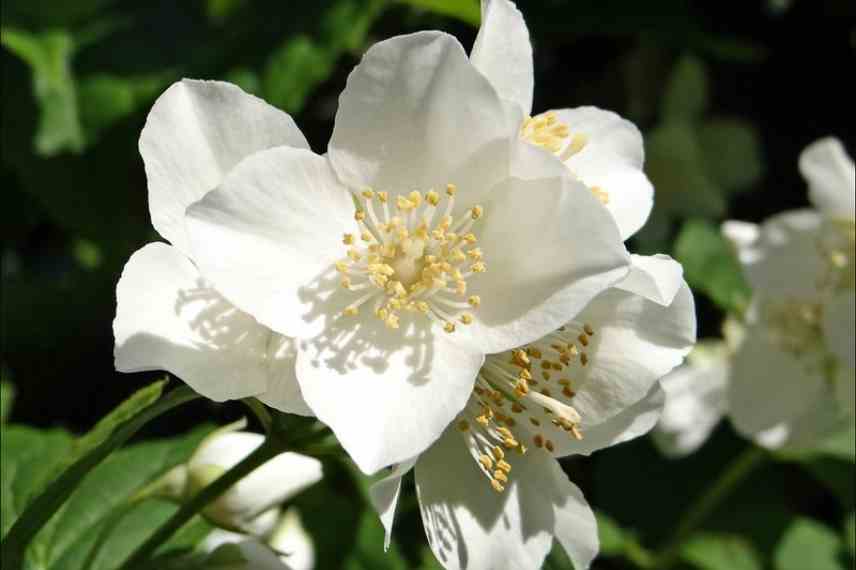
Mock oranges love the sun! (Photo : J.P. Dalbera)
Read also
10 dwarf fruit trees to grow in potsCaring for mock orange grown in a pot
Watering and fertilisation
During whole growing period from spring to autumn, water regularly as soon as substrate becomes dry, to keep substrate moist without waterlogging it.
We recommend watering about twice a week for mock orange in pots. In winter, reduce watering and allow substrate to dry out between waterings.
Since substrate in pots becomes exhausted more quickly than in ground, apply compost, fertiliser for pots or liquid fertiliser for flowering bushes once a year, in early spring.
To further stimulate growth and flowering, it is possible to fertilise mock orange in a pot more intensively, once a month from May to August. Stop all fertilisation in winter.

Abundant flowering of a Philadelphus (photo: L. Enking)
Pruning
Pruning a mock orange in a pot is not obligatory, as bush can be left to develop naturally.
If you wish to prune bush to maintain a harmonious silhouette, do so after flowering at end of summer, in August.
This pruning will remove dead wood and eliminate crossing branches, to thin out and allow light to penetrate heart of bush. For this, shorten branches by up to one-third of their length, cutting with a pruning shear with disinfected blades just above an eye (bud’s growth point).
Pruning is usually carried out after 2 or 3 years and is not intended to be repeated annually.
Repotting
Repot mock orange to renew substrate every 2 or 3 years or so, depending on growth and size of bush at ripeness.
In other years, simply perform a surface dressing, by scraping and replacing substrate on top 5 centimetres of pot with fresh potting soil.
Diseases
Hardy, mock orange is rarely subject to diseases. Only powdery mildew may appear on foliage, but treatment is generally not necessary.
If black aphids are present, leave natural predators such as ladybirds to act. If infestation is heavy, spray late in day a solution of soapy water or black soap (1 L water to 4–5 tablespoons).
Overwintering
Mock orange is not afraid of cold. Very hardy, bush tolerates low temperatures down to -20°C. It will therefore generally not require overwintering, shelter or additional protection against cold and frost.
To learn more
Discover everything you need to know about mock orange in our comprehensive guide.
- Subscribe!
- Contents



































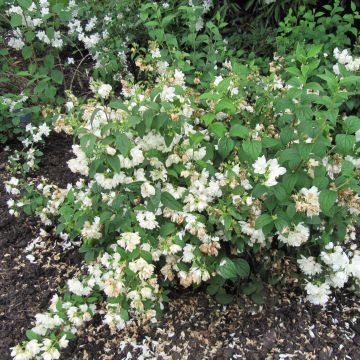
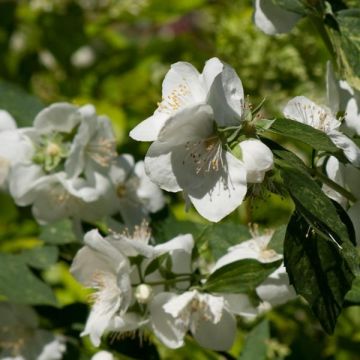

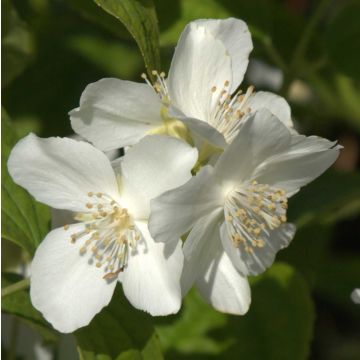

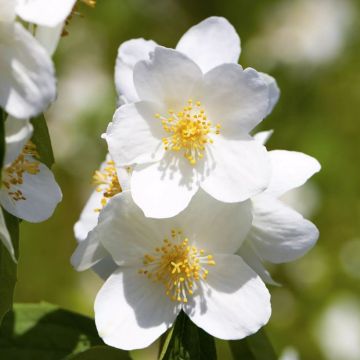
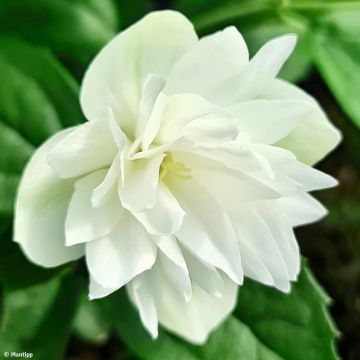

Comments